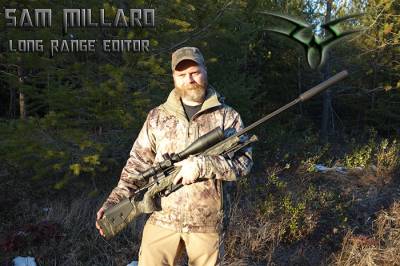Book Review: Modern Advancements in Long Range Shooting
By Sam Millard
With the popularity of long range hunting and shooting rising every year, equipment manufacturers and information brokers are scrambling to claim their share of the market. With the amount of gear available and Internet access to forums, blogs, etc., for our information, it can be daunting to figure out what works and what doesn’t…and why.
In Modern Advancements In Long Range Shooting: Volume 1, Brian Litz of Applied Ballistics tests several ideas concerning the making of a long range shot and thetools we use to accomplish it. He uses a scientific method rather than relying on anecdotal evidence. In the introduction, he states, “Rather than rely on popular opinion or marketing hype, we approach the matter with careful experimentation which is then described in a way that’s easy to understand and apply.”
The book is broken down into four parts, covering four distinctly different areas of research:
Part 1 covers stability issues and how they affect bullet flight. One of the most interesting topics in these five chapters concerns the effect of fast twist rifling on velocity and precision. The testing showed that fast twist rifling (which is necessary for stabilizing long-for-caliber, high B.C. bullets) has no practical, negative impact on precision or muzzle velocity.
Part 2 is an equipment discussion, covering rifles, optics, and bullets. The first two chapters talk about rifles and scopes. Mr. Litz asks the question, “What’s holding us back?” He proceeds to address issues such as limitations on rifles (magazine length restrictions and barrel twist rates) and optics (tube diameters and accurate turret adjustments, along with mounting systems).
The last three chapters are all about bullets and the advancements made in designs that improve their performance at long range.
Chapter 9 is named Rise of the 30 Caliber and seeks to find out what has limited the long range shooter who favors this popular caliber. If you have ever wondered how the excellent 215 and 230 grain Hybrid bullets from Berger came to be, you will find it here!
Part 3 looks at predictive modeling and how it is used to form ballistic solvers. There is an extensive discussion about the limitations placed on a ballistic program simply due to the inputs the shooter provides. “Garbage in, garbage out,” is mentioned and explained in detail. Also, each input is looked at closely and prioritized according to its effect on the output. Chapter 12 of this section covers secondary effects on flight such as coriolis, spin drift, and aerodynamic jump. This chapter contains some of the best information I have ever read on this topic.
Part 4 returns to an equipment discussion, including an extensive and interesting test with several chronographs to determine accuracy and precision of each unit. If you want to know how popular chronographs stack up to each other, this is by far the most thorough testing that I have seen. Also covered are laser rangefinders, how they work, and what their limitations are. Contributing author, Nick Vitalbo, takes over with the laser testing. He also adds a chapter on measuring wind with a laser device, all the way to the target. This is some interesting technology that is being worked on now at AppliedBallistics.
In closing, I would say that if you’re looking for a “how-to” long range book, this ain’t it. However, if you want to expand your knowledge of the why’s and what’s, this is an excellent resource. As a dedicated long range shooter, I’ve always thought those last two questions were more important than the first one.
You can visit Applied Ballistics website to purchase a book here
You can discuss this article or ask the author questions here




















